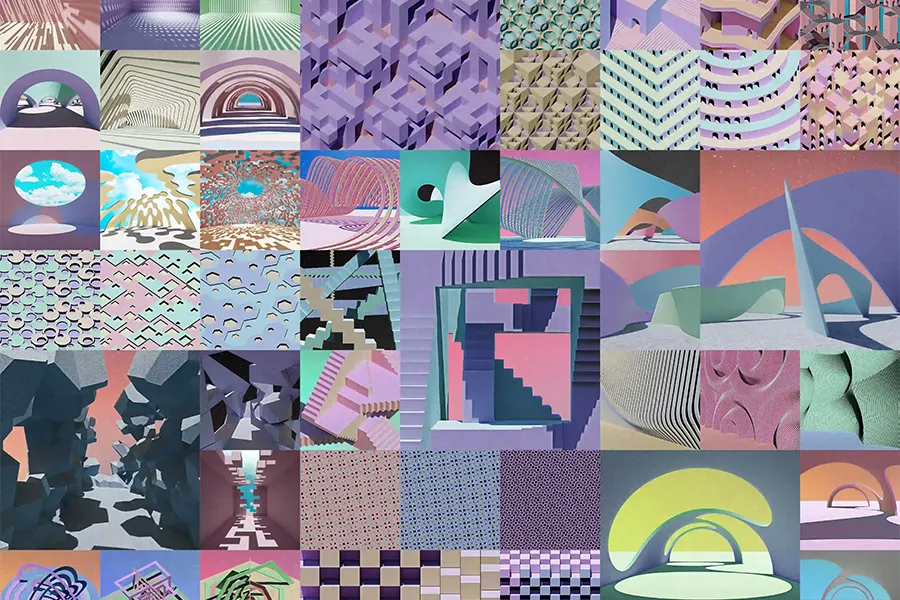
Scripting forms in architecture leverages algorithms to generate and control geometry. Tools like Grasshopper3D make it possible to create adaptive, data-driven forms through visual programming and parametric logic. This article explores how algorithmic and script-based workflows empower architectural design to generate intricate and diverse forms, particularly using Grasshopper3D.
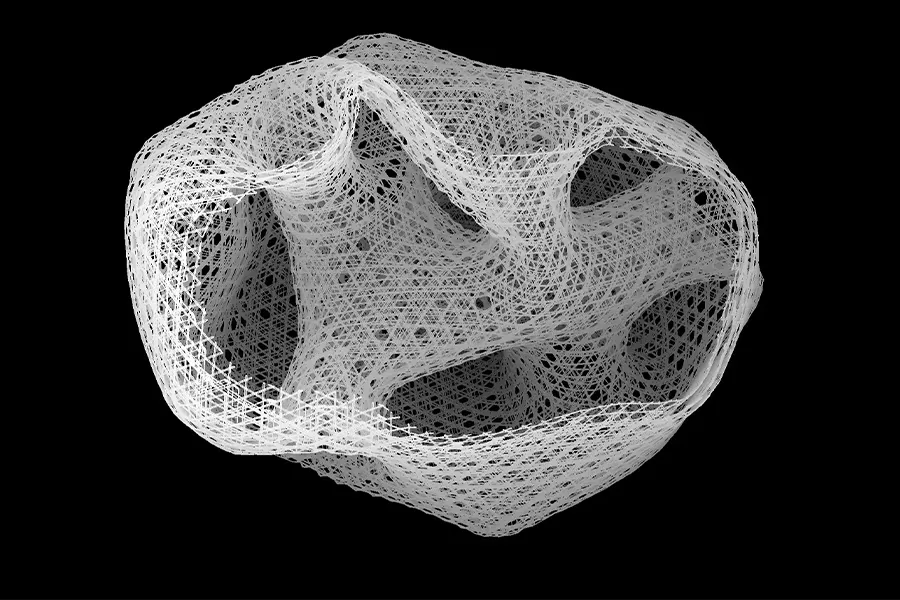
An algorithmic, script-based form-making uses visual programming and coding systems as a method to generate, manipulate, and control geometry, as part of parametric design workflows. Instead of manually modeling each geometry, designers implement different algorithms and scripts to develop rich, complex, and dynamically alterable architectural forms.
The method is central to computational design, where the designer defines relationships, behaviors, and inputs that generate forms binding to the input data. Scripting forms is not just a technical approach, but also a design attitude that treats coding and algorithms as a medium for pushing creativity.
Many design programs allow this methodology through unique scripting environments, but the most influential and widely adopted platform in the architectural design field is Grasshopper3D.
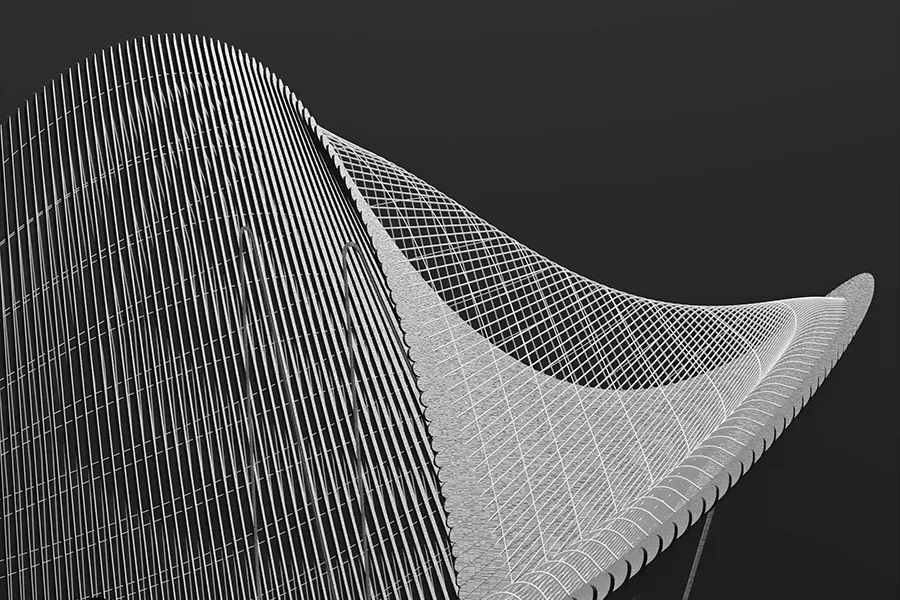
Grasshopper3D is a visual programming environment that works within Rhinoceros3D. It uses a node-based interface where users interconnect visual components to define functions and processes.
With Grasshopper3D, architects and designers can:
Grasshopper3D has set a foundational framework in parametric architecture and design, as it is used by leading firms and academic institutions worldwide. Its user-friendly visual interface makes it accessible to non-programmers.
Grasshopper’s approach is not limited to its native components and basic workflows; it captures various custom-made plugins made by the community to solve different kinds of functional challenges and develop design solutions. Notable plugins include Pufferfish and LunchBox, which are widely used for advanced form manipulation and data-driven workflows.
This environment of systematic and customizable logic directly supports scripting form approaches in architectural design, enabling adaptive, efficient, and performance-driven workflows.
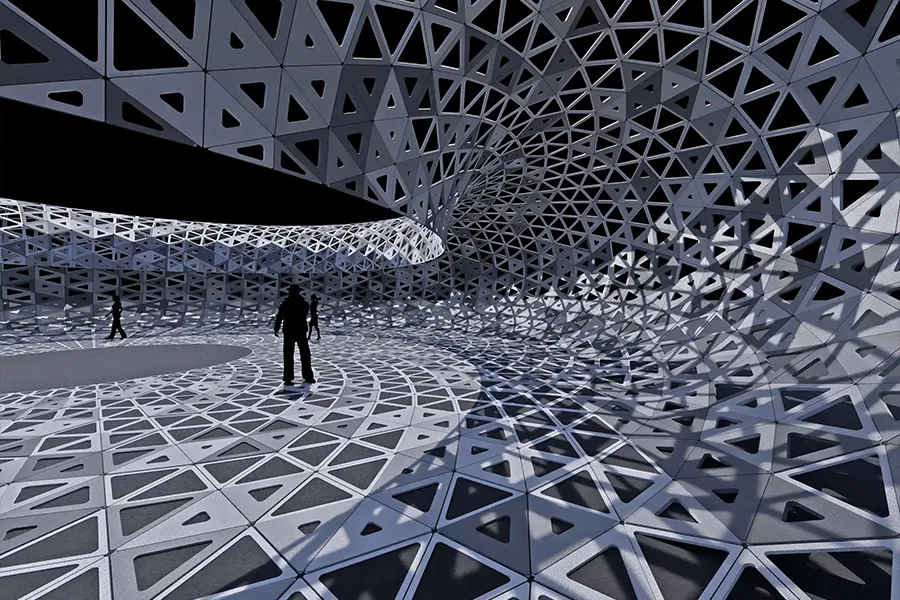
Scripting forms in architecture introduces a new layer of creative and flexible approaches. By integrating algorithms into the design workflow, architects and designers gain powerful and advanced capabilities that boost creativity and performance.
Scripting allows designers to generate and modify complex geometries by adjusting a few parameters or rules. This adaptability is especially valuable in early architectural design stages when rapid iteration and decision-making are crucial.
Through scripting, form generation is no longer based on manual design methods; every line, surface, and transformation can be precisely defined, developed, and manipulated, minimizing errors and maximizing design intent.
When a design framework is embedded into a script or visual definition, it becomes easy to test multiple versions of an architectural concept rapidly, exploring different architectural forms and configurations. This allows architects to evaluate suitable and optimum forms according to data inputs.
Many digital fabrication workflow types, including 3D printing, robotic assembly, and CNC milling, require clean, rule-based geometric constructs. Scripting methods make the transition from digital concept to construction smoother.

While Grasshopper3D leads in the architectural design field, the logic of scripting forms has expanded into other disciplines through other digital tools. Tools like Blender (with Geometry Nodes) and Houdini for VFX follow similar principles of procedural modeling, using data-driven scripts to control design forms, attracting professionals from various fields.
In Blender, artists use Geometry Nodes to create parametric processes and real-time animations, constructing geometry through a node-based interface. Similarly, Houdini has become an industry standard in the VFX and animation world, known for its deep procedural modeling capabilities. Designers in Houdini build environments, simulations, and structures through data-driven workflows, which often involve scripting in programming interfaces like Python.
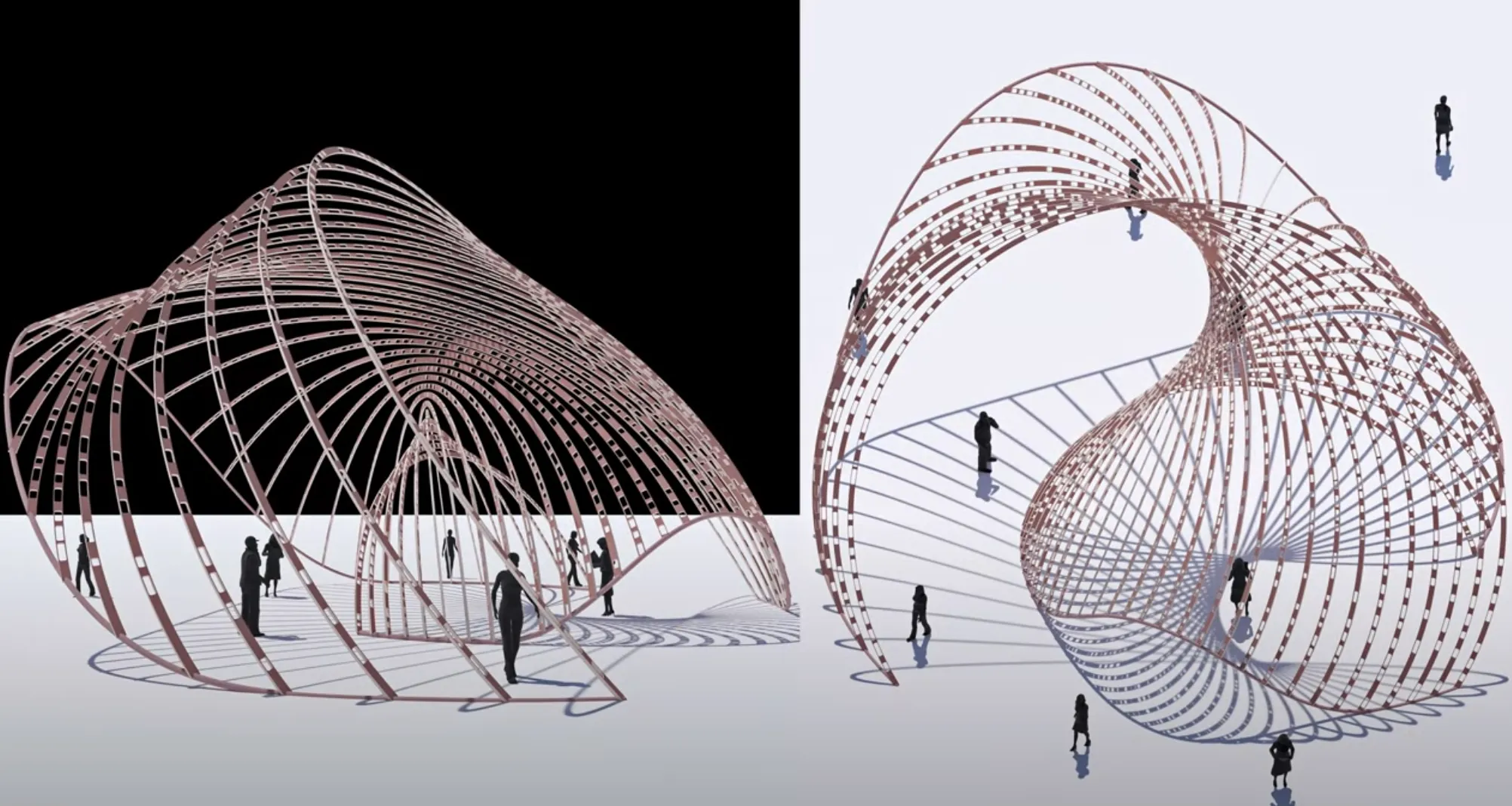
Though these platforms serve different industries, they share a common design framework, which is programming the architectural form development process.
This cross-disciplinary overlap reinforces the relevance of scripting in spatial design. For architecture, using Grasshopper3D for scripting forms pushes the design processes to a new level, enabling parametric workflows, generative modeling, and integration with coding-based form development.
Ready to dive into the process of parametric form-making? Join our upcoming workshop, “Scripting Forms: Grasshopper3D & Blender”, which will focus on how to script your design language from concept to complex forms, using Grasshopper3D and Blender’s Geometry Nodes. If you’re looking to start with Grasshopper3D, feel free to explore various relevant learning opportunities on PAACADEMY.
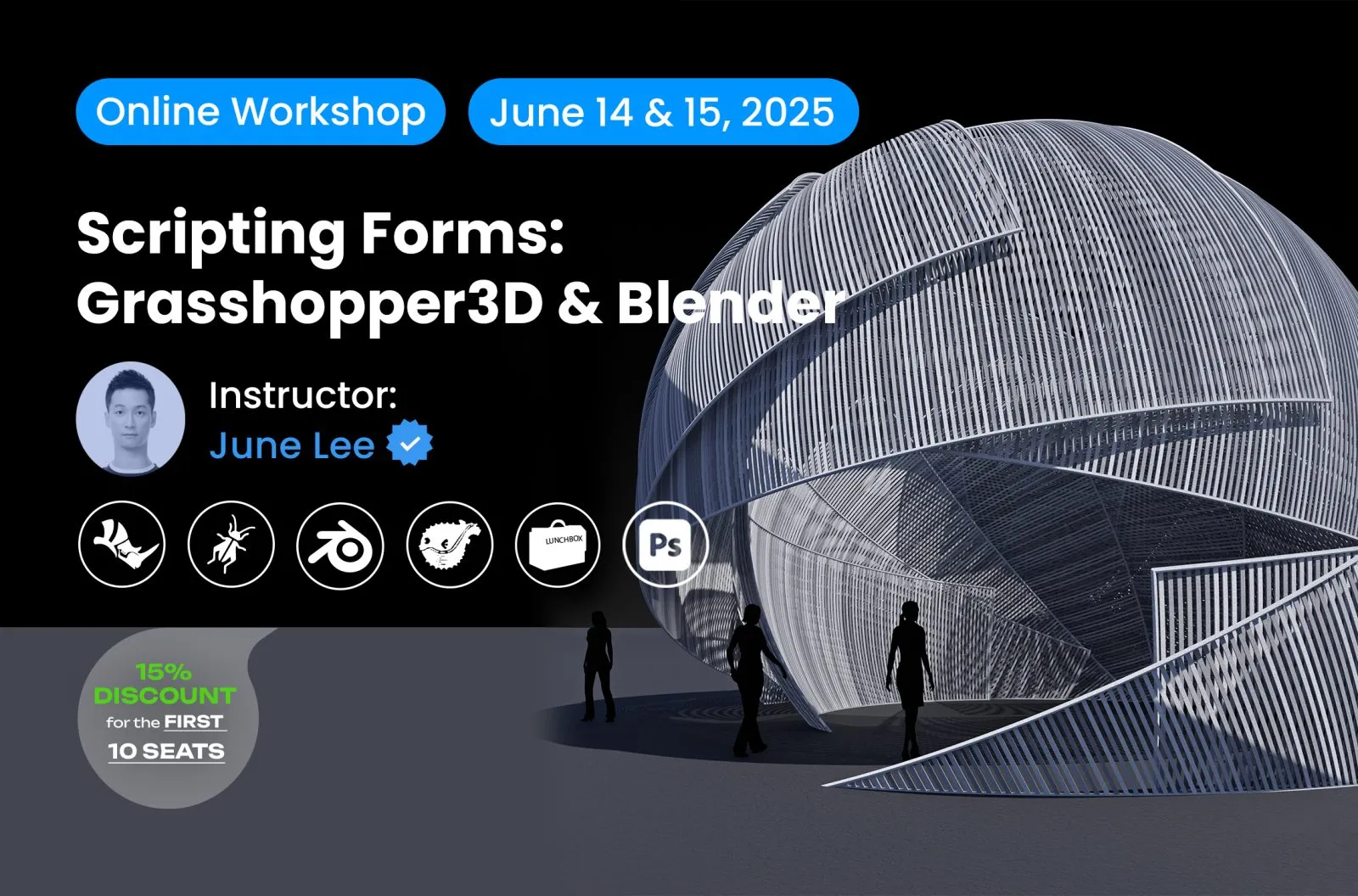
Grasshopper3D’s visual programming interface bridges the gap between creative approaches and design precision, making computational design accessible to a broad range of practitioners. Its practical integration with Rhino3D and support for digital fabrication workflows allow the development of complex architectural forms, designed with accuracy and speed.
Beyond architecture, the scripting paradigm within Grasshopper3D has influenced various creative disciplines. As computational design continues to evolve, Grasshopper3D remains at the forefront, especially in the architectural field, fostering a vibrant community and continually expanding its capabilities through plugins and integrations.
The lasting impact of scripting forms with Grasshopper3D lies in its ability to enable architects to push the boundaries of form, function, and fabrication, setting a foundation for the future of intelligent and responsive architecture.
You must be logged in to comment.